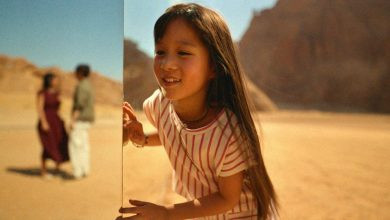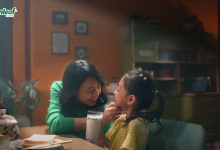adobo magazine had the privilege of sitting down with Ron Molina, Ginebra’s Assistant Vice President and Marketing Manger, to chat about the brand’s latest campaign and the rich history behind it that has not only represented a population, but the libation culture of a nation.
Below is the condensed transcript:
The idea behind Ginebra Ako is to really salute and pay tribute to the Filipino who is the everyday hero for their family, their community, as a collective for the country.
These are also our drinkers but whether they drink our product or not, being Filipino makes them heroes in so many ways and we just wanted to bring recognition to that. We started in 2017 thinking about that and ‘cause marketing is really a platform–your product, your messaging is really a platform–and we took the opportunity to make that a platform for recognizing these everyday heroes.
Bakit 2017? The big thing that was going on was the Marawi siege and the war that ensued and we wanted to tell stories about the soldiers that fought in that war and along with those stories, we wanted to tell the stories of other people who are heroes in their own right.
Obviously, not everyone wakes up to a great life. Everyone, almost everyone, wakes up to a struggle of some sort and for people to say, ‘I’m getting up today, babangon ako ngayon, and I’m not doing it for myself, I’m doing for my kid, I’m doing it for my wife, or I’m doing it for the community, or I’m doing it for the country,’ is just something. There’s something in there that inspires people and we wanted to get into it so we wanted to tell the story through the eyes of these people, through the smiles of these people, through the grit that they display and so was born the first Ginebra ako kape, which received a lot of good feedback ranging from a would-be lawyer saying, ‘I’m not gonna put away taking the board exams anymore, I’m gonna take it now.’
They were so inspired; taken by that idea of not giving up and really going for it and being fearless. Historically, Ginebra is a brand that has been part of the Filipino’s life since 1834 and since then, it’s always been something that brought people together.
In Malolos, when we were in Malolos, there was a story that went like this: the banned book of Rizal–not sure if it was the El Fili or the Noli me Tangere– was actually shipped in boxes of Ginebra San Miguel for them to escape being stopped by the Spanish government.
It was shipped in Ginebra San Miguel boxes under product and it made its way to more people so Ginebra being a hundred-eighty-five year-old brand shares a lot with the Filipino people and I think that thing that’s common between the brand, the product, and the people is the tapang, the quality of being unapologetically matapang. From a product perspective that needs proof but we’re talking about beyond product, we’re talking about the spirit of never say die, getting up everyday, being ganado.
In tagay, the second version of tagay, we took that not just to mean that it’s a sign for masculinity or machismo, which traditionally has been attributed to the Ginebra drinker. We wanted to take that and say no. People, Filipinos, whatever the gendre: male, female, they exhibit this, they live this, they feel this, they fight, they stand up, they get back-up and they overcome and they’re not doing this for themselves but for others.
I guess being matapang for its own sake is really meaningless, meaning I can be a warfreak and be matapang that way but if I’m not doing it for others, it’s not exactly being a hero. For most people, it is about being a hero in the context or relationships, community, country and all of that.
That was tagay one, mostly, and tagay two, the second version, really meant to not just inspire but bring motivation to people and this is how we define it: tagay one inspired people in a sense that you’ll overcome but then tagay two goes so far as to say these people have overcome and that’s why you can to, so you’re more motivated.
If the context of life is, ‘It’s gonna be tougher,’ we’re saying, ‘No, you’re tougher than that. You can be tougher than that. You’re gonna get back-up and you’re gonna overcome. Never say die’
The thing that we said we wanted to keep from the first one was the authenticity of the story-telling. We wanted to keep it as real as possible. There are some scenes there like the farmer scene that’s really based on a true story where the farmer actually had a son graduate and achieve something for himself in school and then of course, there are those everyday stories of struggle so we kept that and we wanted to keep that.
We wanted to update the music because we just didn’t want it to stay inspirational, which really means, ‘I’m inspired but I’m not sure if everyone else was inspired,’ so we wanted it to be more motivating because that is a universal feeling. You know if I’m motivated, probably, you are too.
The second layer of that is the context of, ‘It’s gonna be tougher this year. It might be tougher this year for some people and for most people.’ We wanted them to reference an anthem that they could own, they could say, ‘This is me. I want this to keep me going. From a marketing standpoint, we wanted to inspire not just the core but we also wanted to inspire the younger, the youth, with the same ideal, with the same idea of not giving up.
It being a motivational thing, we wanted characters or icons to be the statement that said it could be done. People overcome, they’ve overcome and so can you so we chose Pia Wurtzbach who everyone knows that the Miss Universe title wasn’t handed to her on a silver platter. On the day that she won it, somebody else was proclaimed before her name finally came up, so that’s why down to the end, there was a struggle but she kept her composure and then she won it and that’s a great story.
Then there was Scottie Thompson of the basketball team, he wasn’t drafted, he was undrafted, he wasn’t number one pick. A lot of teams passed up on him and now he’s one of the best players of Barangay Ginebra, the basketball team.
Of course there’s Hidily Diaz, I think our first Olympic silver medalist, Olympic medalist for the Filipino so she inspires a lot of people. Her story has to do with injury, training through injury, she was injured, wasn’t supposed to compete but she trained through all that until she was able to compete, was fit enough to compete and then she got silver and her hopes is that in the next Olympic event that she gets better, hopefully gold.
Then, there’s Looney, Looney is like the Eminem of the Philippines. In fact, he got invited to London to perform with stars of the world of rap music so he’s part of that. For a Filipino to perform in the world stage like that, is not easy, but then going through it and not giving up, just staying through to his craft makes him that kind of hero for a lot of people. I think he’s got followers in the millions in the Philippines alone so (he) inspires a lot of people.
Then of course, there’s KZ Tandingan, speaking of the world stage, she competed in China, her talent was well-recognized there but here’s her story: before that, she lost her voice, she actually lost her voice because, I think, she strained her vocal cords too much. Now, she’s husky but she used to sing with greater power but then she kinda over-extended herself, I suppose so. But then, she didn’t take that as a permanent setback, she got back up, competed and won in Shanghai. She competed against some known people, Jessie J was there, so real people, real stories and the idea is really to say, ‘They can do it, we all can. Don’t give up, never say die. This is the spirit of Ginebra. This is the spirit of the Filipino.’
Last year, when we had that campaign, we made sure that it wasn’t just lip service, it wasnt just, ‘Okay, this idea, and the commercial, glad that everyone was responding to it.’
Towards the end of last year, we actually put up the first Ginebra Ako Awards where we did recognize real people for real achievements that had impact on their communities on a larger scale. In fact, there was this fisherman who got an award. He was nominated, obviously. He made fishing sustainable for a lot of fishing villages, he started with one, (he was) very passionate about it, studied it, educated himself about it and spread the gospel of sustainable fishing and now, the DENR has recognized his efforts and turned that into a program and he’s got more shoreline that he can take care of for various communities.
He had to go through opposition in the beginning and nobody believed in what he was doing but then he got the fishermen to see it a particular way and now they’re reaping the benefits of sustainable fishing so that was very satisfying for us. When you get to talk to them, they would have no connections so no one’s gonna throw a spotlight on them but this encourages them in a sense that, ‘Hey, somebody actually appreciates what I’ve done and what I’ve done is actually impacting a lot of other lives, I aid a community.’
I think we’re gonna keep on doing that. Like I said, it’s a platform, marketing is a platform, products are a platform, campaigns are a platform and if we’re not doing it for the sake of greater good, we’re not really leveraging the opportunity, we’re not really leveraging the platform.
We wanna leverage that platform and if you talk about that platform, that context of nation-building, guess what? Building starts with the mind, starts with each and every Filipinos’ mind and if we’re able to establish that, ‘This is the spirit of the Filipino, we just need to persist, we just need to get back up every time,’ then, I think, we would have done more than we imagined.
The great result there, we saw it. People gravitate towards products and brands that they feel connected to and if we’re able to connect to them and recognize them, that spirit them, then the business result shouldn’t be far behind. We saw it last year, we had great results. But really, more than that as the goal, there’s a bigger context, bigger purpose to it. We’re just happy to see ourselves in a space like this.
Since 1834, Ginebra’s been around. In fact, this year’s gonna be our 185th year. I think, one of the, if not the oldest Filipino brand that’s still in the market today. Everything about it is Filipino and it, as a product itself, has made it to the world stage as the number one selling gin in the world and this is vetted by this body called Millionaire’s Club, where if you’re in a million cases and above, you’re really part of that club in the hard liquor industry of the world and we are recognized, our Filipino brand of Ginebra San Miguel is recognized as the number-one selling gin in the whole world, it really is amazing.
There’s stuff around it that not a lot of people know. Take a bottle of Ginebra San Miguel, this artwork in front of it is really a Fernando Amorsolo artwork. Before he became the National Artist that he is, he made this, he was commissioned and the owners at that time, the Ayalas were so impressed that they sent him to Spain to study art and that’s how he became what he is. Great stories behind a product this, a lot of history.








